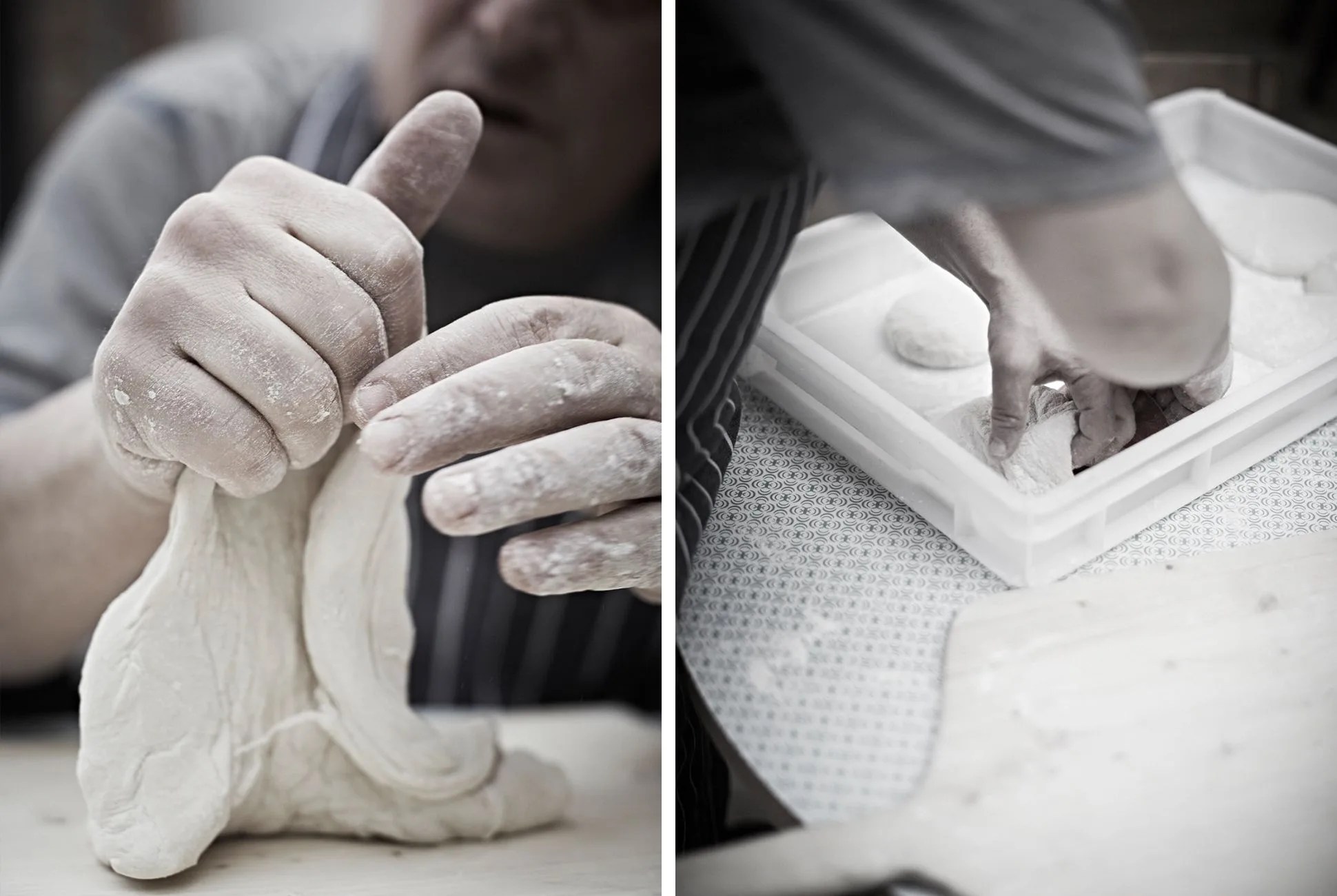Good pizza starts with great dough. As with so many foundational recipes, working with high-quality, flavorful ingredients is paramount. Few know it better than Chris Bianco, James Beard Award–winning chef and proprietor of Pizzeria Bianco in Phoenix, Arizona, and an artisanal pizza pioneer. Of a dough’s four ingredients — flour, water, yeast and salt — it’s flour that has the greatest effect on flavor. (Bianco recommends working with a freshly milled organic flour for a crust with a good chew.) Making the dough is surprisingly uncomplicated, and working it into form is a matter of letting gravity do what it does best. What’s left is, effectively, a blank canvas.
Shaped into a circle, the dough counts as pizza; spread across a baking sheet, it becomes focaccia. When it comes to toppings, anything goes. Try adding ‘nduja, a spicy spreadable Italian sausage; drizzle high-quality balsamic; top it with foraged mushrooms. For sauce, Bianco favors his namesake brand of canned tomatoes, Bianco DiNapoli, crushed by hand, mixed with basil and a pinch of salt and left to mingle (no cooking required).
Pizza Dough
Makes enough for four 10-inch pizzas
Ingredients:
1 envelope (2 1/4 teaspoons) active dry yeast
2 cups warm water (105–110 degrees Fahrenheit)
5 to 5 1/2 cups bread or other high-protein flour, plus more for dusting
2 teaspoons fine sea salt
Extra virgin olive oil
Preparation:
1. Combine the yeast and warm water in a large bowl. Give the yeast a stir to help dissolve it, and let it do its thing for five minutes. You’re giving it a little bit of a kick-start, giving it some room to activate, to breathe.
2. When the yeast has dissolved, stir in 3 cups of flour, mixing gently until smooth. You’re letting the flour marry the yeast. Slowly add 2 cups more flour, working it in gently. You should be able to smell the yeast working — that happy yeasty smell. Add the salt. (If you add the salt earlier, it could inhibit the yeast’s growth.) If necessary, add up to 1/2 cup more flour, 1 tablespoon at a time, stirring until the dough comes away from the bowl but is still sticky.

